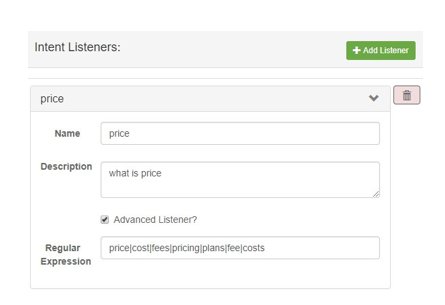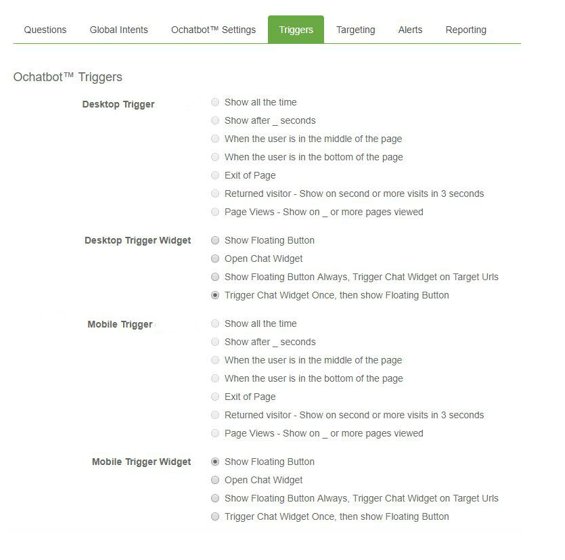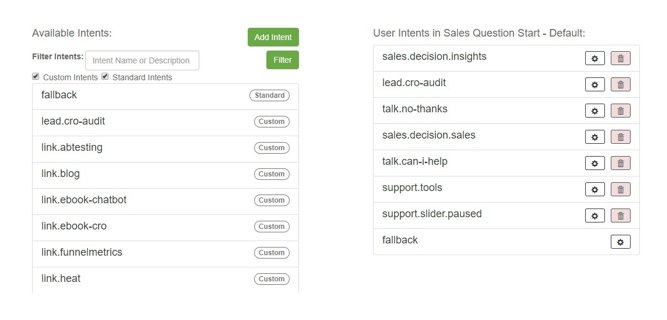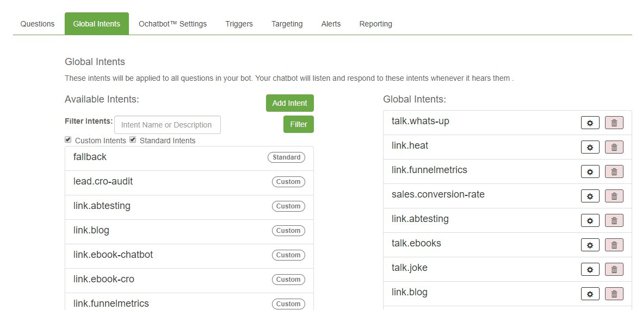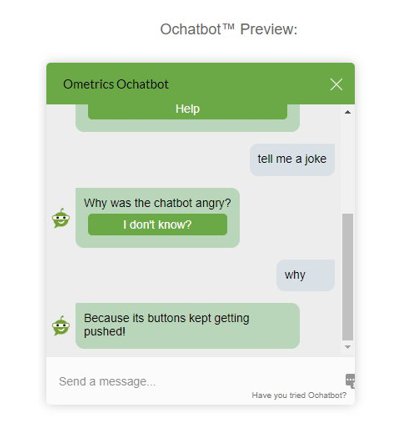Building a chatbot does not have to be overly complex, but it does require a little forethought. We will show how to build a chatbot in a step by step process.
Step 1 – What is the purpose of your chatbot
Chatbots have a number of purposes such as:
- Lead generation
- Sales, online and offline
- Improving usability and navigation of the site
- Gaining insights
- Support
The conversation and call to action for each of these is different. You can have all of these conversations happening at once. Each conversation would be scripted differently.
To understand how well the chatbot is working, determine what metrics you will watch. Note that all data is collected from the conversations. This means if you forgot to include a product or service, users will ask for it. You will also gain insights on what users are asking.
Step 2 – Create a bubble diagram of conversations
The architecture of the chatbot has many tangents and sub-topics just like typical conversations. A quick way to organize this is to create bubble diagram showing different conversations and if they are connected.
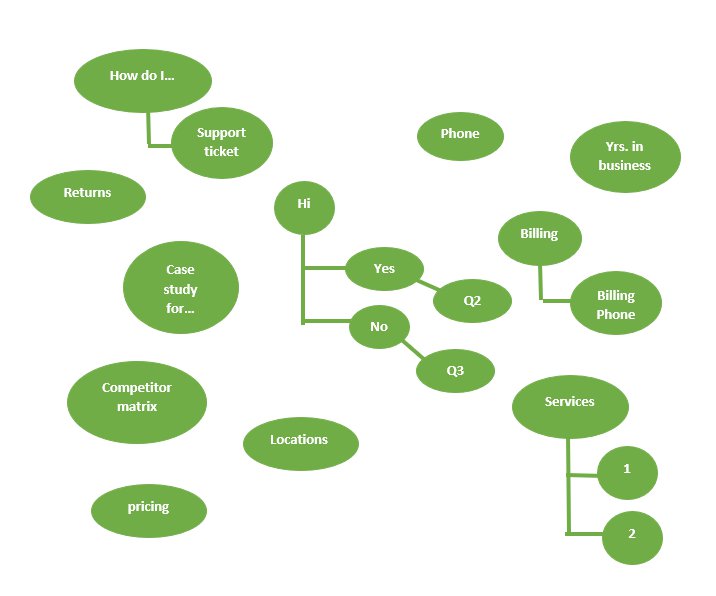 Step 3 – Create your default introduction question
Step 3 – Create your default introduction question
The default introduction question is similar to a home page with users coming back to it. More importantly, the first question asked will affect the conversion rate and effectiveness of the chatbot. With the wrong introduction question, the chatbot may not be activated by users.
Here is an example if you had a catering company:
Option one:
Hi I am a chatbot. What are you interested in?
- Weddings
- Graduations
- Big parties
- Small parties
- Office lunches
The user would click an option that brings them to a page, or the chatbot can ask a qualifying question to assist them.
Option two:
Hi, I am a chatbot. Tell me about your event.
The chatbot listens for words like wedding, graduation…
If the chatbot determines it is a party, the chatbot responds with:
That’s great, I love parties! How many people will be attending?
Additional questions are:
Is the party going to be inside or outside?
Do you want a sit-down meal or a buffet?
For a buffet, I would recommend our taco bar…
Option two is a typical consultative sale where you find out what the customers’ problems are, and then suggest solutions instead of providing information that may not be relevant to the customer.
Within the default question, there will be intents that are specific to the question and other intents that are global. Determine what intents are specific to this conversation.
Chatbot Structure
This is a good time to take a tangent and explain how chatbots work.
Chatbots are trying to understand the “intent” of what the user is talking about.
Intents have two components:
Listeners – Listeners are keywords and phrases that trigger when that particular term is detected. Many listeners are already preprogrammed and are constantly being improved so you only have to think of the listeners that are relevant to your business. The keywords can use regex (a regular expression) logic such as:
word|words – list of words
^word – must begin with this word
\b word \b – must contain this phrase
A regular expression (regex) is a special text string to describe a search pattern. A regular expression is like an amplified wildcard.
Replies – Replies are the action that happens when the intent is triggered. There are a number of reply options which can be combined.
- Connect to a question
- Provide a text reply
- Provide a button with a link
- Show an image or video
Intents can be global or specific to a question. If the chatbot does not understand a question, an intent is triggered to reply with your fallback question as a last resort. There are other logic options such as “stay within this conversation.”
Step 4 – Outline your questions and conversational logic
Often there is additional conversational logic after the default question. For example, if your first question is, “Are you interested in a car or a truck,” there would be additional questions for each type of vehicle. Some questions are general like budget, and other questions are specific like truck bed size, number of passengers, sports car or mini-van.
Remember each of these conversions can have their own unique intents.
Step 5 – List your global intents with common questions and replies
Many of the global intents are commonly asked questions or FAQ’s that could happen at any time in a conversation.
For example, in a support conversation, the customer may suddenly ask for a phone number. In this case, the support number is given. If the customer was not in support and asked for a phone number, then the reply would list different department phone numbers (sales, support, billing…).
Step 6 – Determine your variables and call to actions
Variables allow a faster creation of intents. A typical variable would be a phone number, email address or contact us URL. You can also have full sentences which are often the same as a call-to-action such as “to learn more call 800-700-8077.”
To use a variable just type {{phone}} or {{email}} or {{contact us}} in the reply message box. When that intent is activated, the phone number or email address is automatically added to the reply message.
In the following examples, we show you how to create a chatbot using the Ometrics Ochatbot
program.
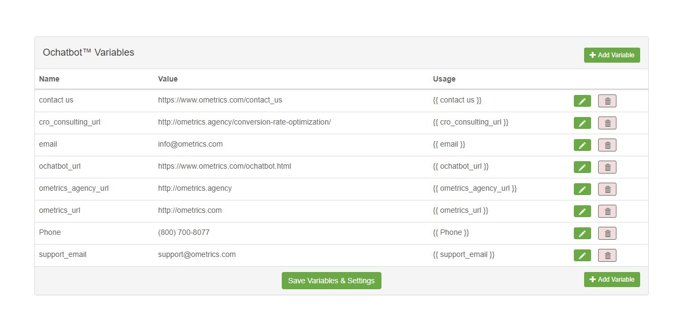
Step 7 – Build your default question
Now you are ready to start building your chatbot. The following example is using the Ochatbot tool. First, determine how the chatbot will engage with the user. Do you want the default question to show first followed by a simple “how may I help you” on the home page? Another option is to ask a different default question on a different page or section of the site.
In the settings section, enter the introduction message.
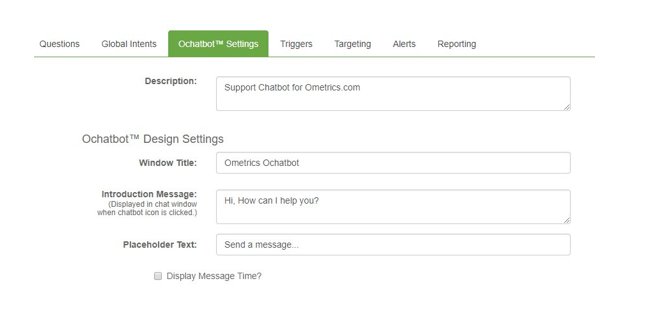 In the trigger section, select how you want the chatbot to trigger for desktop and mobile.
In the trigger section, select how you want the chatbot to trigger for desktop and mobile.
In the questions section, select the question you want to be the default question. The default question will show after the introduction text, depending on your settings. To switch to another question, assign the new question as default by clicking the checkbox.
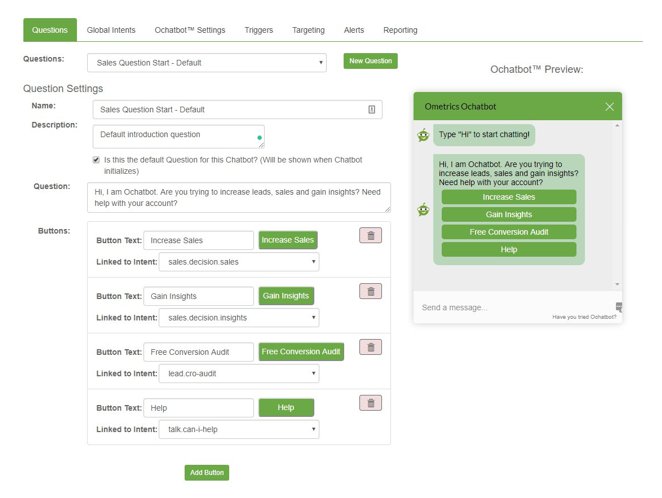 Step 8 – Build other questions and conversational logic and intents
Step 8 – Build other questions and conversational logic and intents
Below the question section, you can add specific intents that are associated with that specific question. Once intents are built, you can drag them over from the list on the left and edit them specifically for that question.
A global intent is an intent that listens all the time including inside an unrelated question or conversation. Global intents are prioritized after the current conversations intents.
Hitting the rails means the chatbot does not understand the question and the reply goes to a “fallback” intent. Determine how you want to handle these types of errors. You can have text, another question or point them to live chat.
Always test in real time as you add your questions and intents.
For more help with chatbots download our Complete Guide to Chatbots and sign up for a free Ochatbot Account. Need help building a chatbot? Our chatbot consulting and development services can help. Click here for more info.
- The Rise of Intelligent Websites - February 19, 2025
- Top Trending Products to Boost Your Shopify Store in 2024 - September 4, 2024
- AI Terms Glossary: Key AI Concepts You Should Know - August 22, 2024
